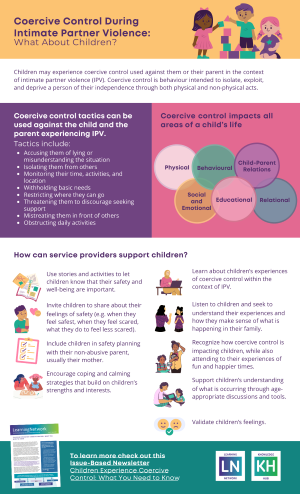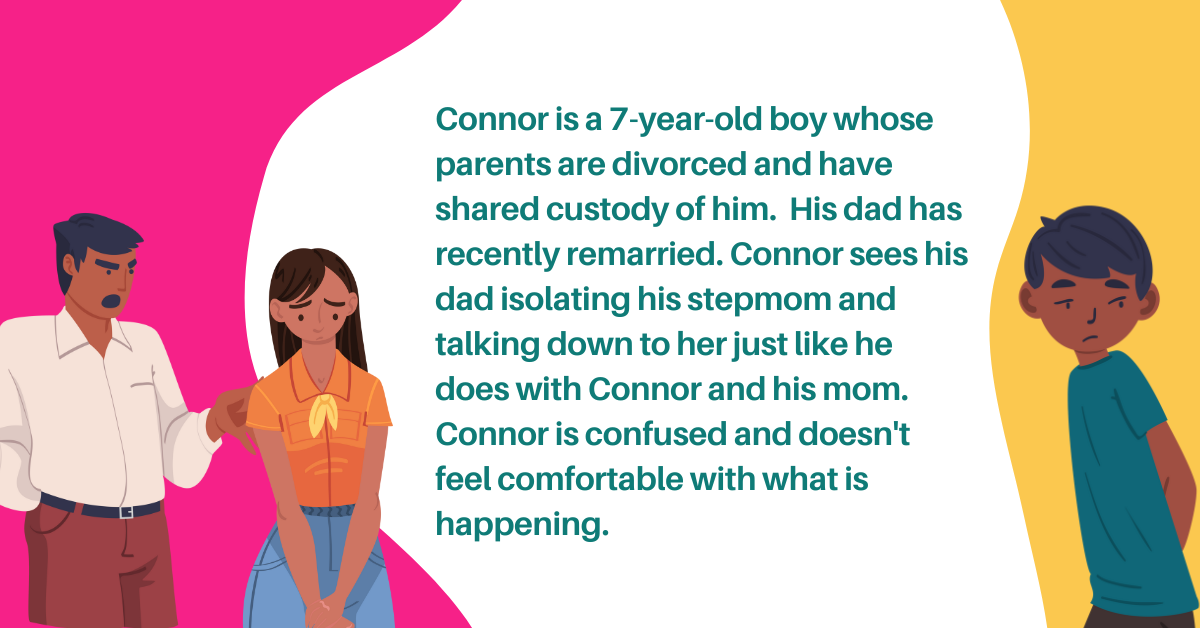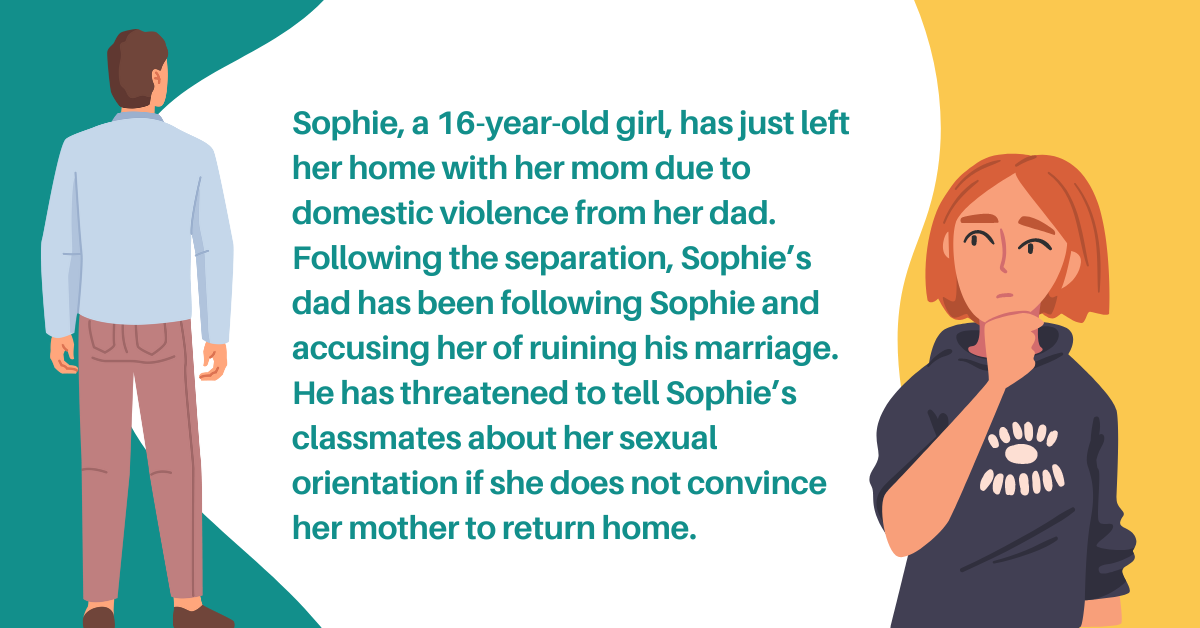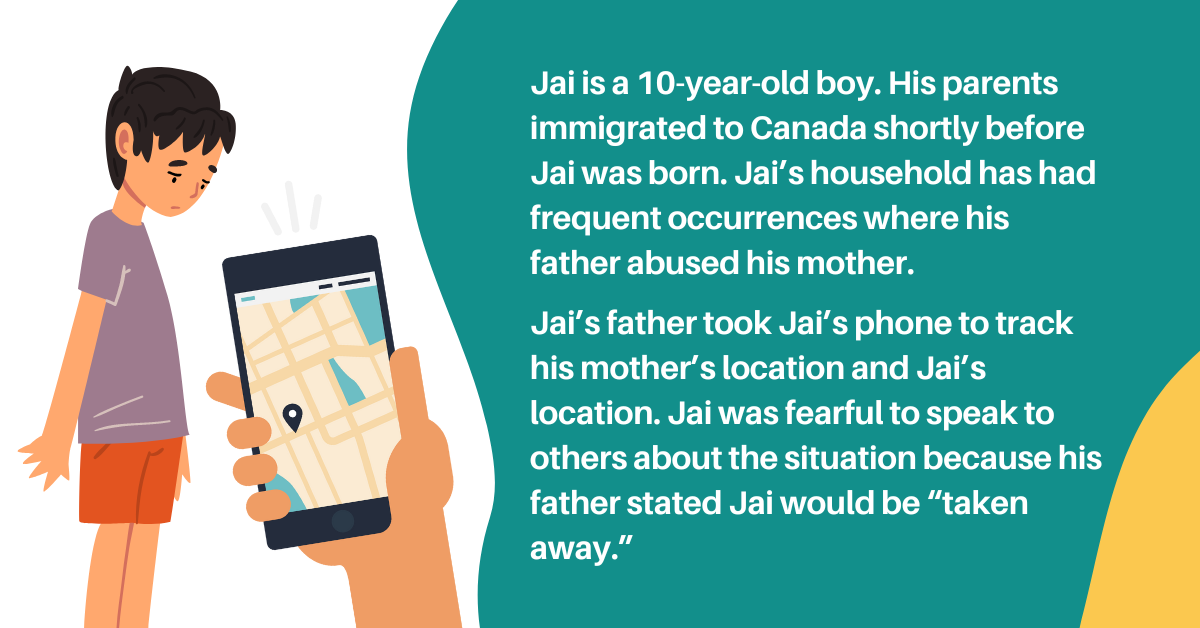Coercive Control During Intimate Partner Violence: What About Children?

This Learning Network and Knowledge Hub infographic focuses on how children and parents experience coercive control during intimate partner violence, and what service providers can do to support children.
Authored by: Jasmine Sidhu
Children may experience coercive control used against them or their parent in the context of intimate partner violence (IPV). Coercive control is behaviour intended to isolate, exploit, and deprive a person of their independence through both physical and non-physical acts.
Coercive Control Tactics Can Be Used Against the Child and the Parent Experiencing IPV. Tactics include:
- Accusing them of lying or misunderstanding the situation
- Isolating them from others
- Monitoring their time, activities, and location
- Withholding basic needs
- Restricting where they can go
- Threatening them to discourage seeking support
- Mistreating them in front of others
- Obstructing daily activities
Coercive Control Impacts All Areas of a Child’s Life
- Physical
- Behavioural
- Child-Parent Relations
- Social and Emotional
- Educational
- Relational
How can service providers support children?
- Learn about children’s experiences of coercive control within the context of IPV.
- Listen to children and seek to understand their experiences and how they make sense of what is happening in their family.
- Recognize how coercive control is impacting children, while also attending to their experiences of fun and happier times.
- Support children’s understanding of what is occurring through age-appropriate discussions and tools.
- Use stories and activities to let children know that their safety and well-being are important.
- Invite children to share about their feelings of safety (e.g. when they feel safest, when they feel scared, what they do to feel less scared).
- Validate children’s feelings.
- Include children in safety planning with their non-abusive parent, usually their mother.
- Encourage coping and calming strategies that build on children’s strengths and interests.
Check out this Learning Network Issue-Based Newsletter Children Experience Coercive Control: What You Need to Know to learn more!
Join us in raising awareness about coercive control against children and parents on social media by sharing the following images:

Connor is a 7-year-old boy whose parents are divorced and have shared custody of him. His dad has recently remarried. Connor sees his dad isolating his stepmom and talking down to her just like he does with Connor and his mom. Connor is confused and doesn't feel comfortable with what is happening.

Sophie, a 16-year-old girl, has just left her home with her mom due to domestic violence from her dad. Following the separation, Sophie’s dad has been following Sophie and accusing her of ruining his marriage. He has threatened to tell Sophie’s classmates about her sexual orientation if she does not convince her mother to return home.

Jai is a 10-year-old boy. His parents immigrated to Canada shortly before Jai was born. Jai’s household has had frequent occurrences where his father abused his mother. Jai’s father took Jai’s phone to track his mother’s location and Jai’s location. Jai was fearful to speak to others about the situation because his father stated Jai would be “taken away.”
